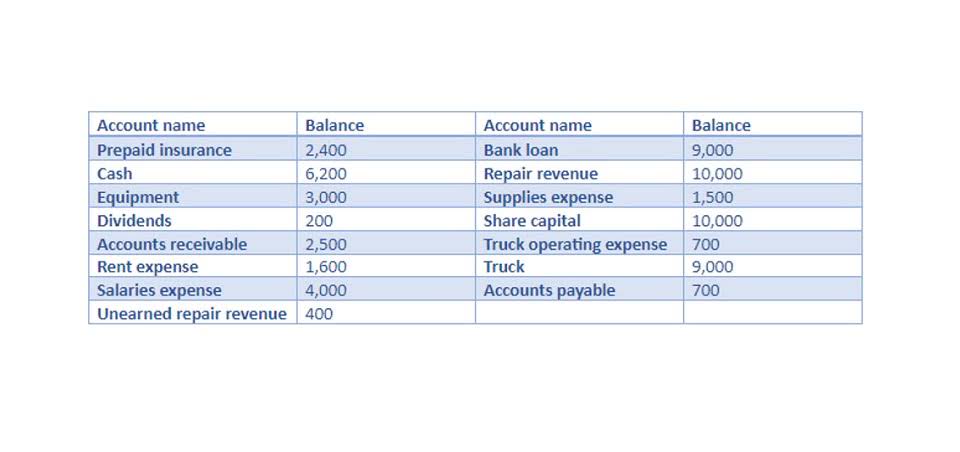
This will allow you to quickly determine your financial health so that you can make intelligent decisions moving forward. While the chart of accounts is certainly more basic than other financial statements, it does offer some pretty important benefits. The balance sheet allows you to pore over a detailed analysis of your company’s assets and liabilities. We’ll define what a chart of accounts is, how it functions, what should be included, and why it’s important for finance leaders and business owners alike to regularly review their chart of accounts. Take note that the chart of accounts of one company may not be suitable for another company.
How can a chart of accounts be used in financial reporting?
These accounts capture the income generated from your core business activities, the lifeblood of your company. Sales of products, services rendered, commissions earned—all these fall under revenue. Remember, this section focuses solely income statement on income directly tied to your central operations. For information pertaining to the registration status of 11 Financial, please contact the state securities regulators for those states in which 11 Financial maintains a registration filing. For example, companies in the United States must have certain accounts in place to comply with the tax reporting requirements of the IRS (Internal Revenue Service).
- In addition, the operating revenues and operating expenses accounts might be further organized by business function and/or by company divisions.
- Not sure where to start or which accounting service fits your needs?
- Revenue is the amount of money your business brings in by selling its products or services to clients.
- For example, asset accounts for larger businesses are generally numbered 1000 to 1999 (or 100 to 199), and liabilities are generally numbered 2000 to 2999 (or 200 to 299).
- To better understand how this information is typically presented, you may want to review a sample of financial statement.
Allows You To Allocate Income and Expenses Properly

From there, you can get even more detailed, further categorizing items by their business function, company divisions, product and service lines, and more. Therefore, while every COA uses the same building blocks – balance sheet and income statement accounts – how deep you delve into each of those blocks is up to you. Having a Chart of Accounts allows businesses to easily track their financial transactions, generate meaningful financial reports, and maintain compliance with applicable regulations.
- Unlike a trial balance that only lists accounts that are active or have balances at the end of the period, the chart lists all of the accounts in the system.
- The balance sheet accounts give a snapshot of the business on any given date.
- Size – Set up your chart to have enough accounts to record transactions properly, but don’t go over board.
- There is no common structure or template of chart of accounts available for the use of all types of business entities.
- No assurance is given that the information is comprehensive in its coverage or that it is suitable in dealing with a customer’s particular situation.
Chart of accounts structure
However, having at least a reasonable understanding of how common statements work and the insights they offer is an important skill to master. Let’s say that in the middle of the year Doris realizes her orthodontics business is spending a lot more money on plaster, because her new hire keeps getting the water to powder ratio wrong when mixing it. Get free guides, articles, tools and calculators to help you navigate the financial side of your business with ease.
A No-Fear Guide to Your Upcoming Financial Statement Audit
11 Financial’s website is limited to the dissemination of general information pertaining to its advisory services, together https://www.bookstime.com/ with access to additional investment-related information, publications, and links. Yes, each business should have its own Chart of Accounts that outlines the specific account categories and numbers relevant to their operations. Therefore, it is advisable to initially create a list of accounts that is unlikely to significantly change for as long as possible and keep it congruent among all areas of business. On the other hand, organizing the chart with a higher level of detail from the beginning allows for more flexibility in categorizing financial transactions and more consistent historical comparisons over time. And even within the manufacturing line of business, a manufacturer in the aerospace sector will have a much different looking chart of accounts than one that produces computer hardware or even clothing apparel.
- Most accounting software’s bank and cash accounts are set up through banking rather than the CoA.
- To make your search easier, we’ve narrowed it down to these twelve picks.
- To create a COA for your own business, you will want to begin with the assets, labeling them with their own unique number, starting with a 1 and putting all entries in list form.
- Firstly, it helps businesses organize their financial transactions and track their financial performance.
- 11 Financial’s website is limited to the dissemination of general information pertaining to its advisory services, together with access to additional investment-related information, publications, and links.
Accounting software products generally set you up with a basic chart of accounts that you can work with your accountant or bookkeeper to amend, according to your industry and your business’s complexity. Small businesses may record hundreds or even thousands of transactions each year. A chart of accounts (COA) is a comprehensive catalog of accounts you can use to categorize those transactions. Think of it as a filing cabinet for your business’s accounting system.

The chart of accounts allows you to organize your business’s complex financial data and distill it into clear, logical account types. It also lays the foundation for all your business’s important financial reports. Similar to a chart of accounts, an accounting template can give you a clear picture of your business’s financial information at a glance. Utilizing accounting tools like these will ensure a better workflow, helping you grow your company. FreshBooks offers a wide variety of accounting tools, like accounting software, that make it easier to stay organized.

Large and small companies use a COA to organize their finances and give interested parties, such as investors and shareholders, a clear view and understanding of their financial health. Separating expenditures, revenue, assets, and liabilities helps to achieve this and ensures that financial statements are in chart of accounts examples compliance with reporting standards. Decide on the account categories you want to include in your chart of accounts. Typically, businesses use a standard set of categories, such as assets, liabilities, equity, income, and expenses. A Chart of Accounts is an organized list of all the accounts in a company’s general ledger, systematically used for recording transactions.
They represent what’s left of the business after you subtract all your company’s liabilities from its assets. They basically measure how valuable the company is to its owner or shareholders. Kristen Slavin is a CPA with 16 years of experience, specializing in accounting, bookkeeping, and tax services for small businesses.
